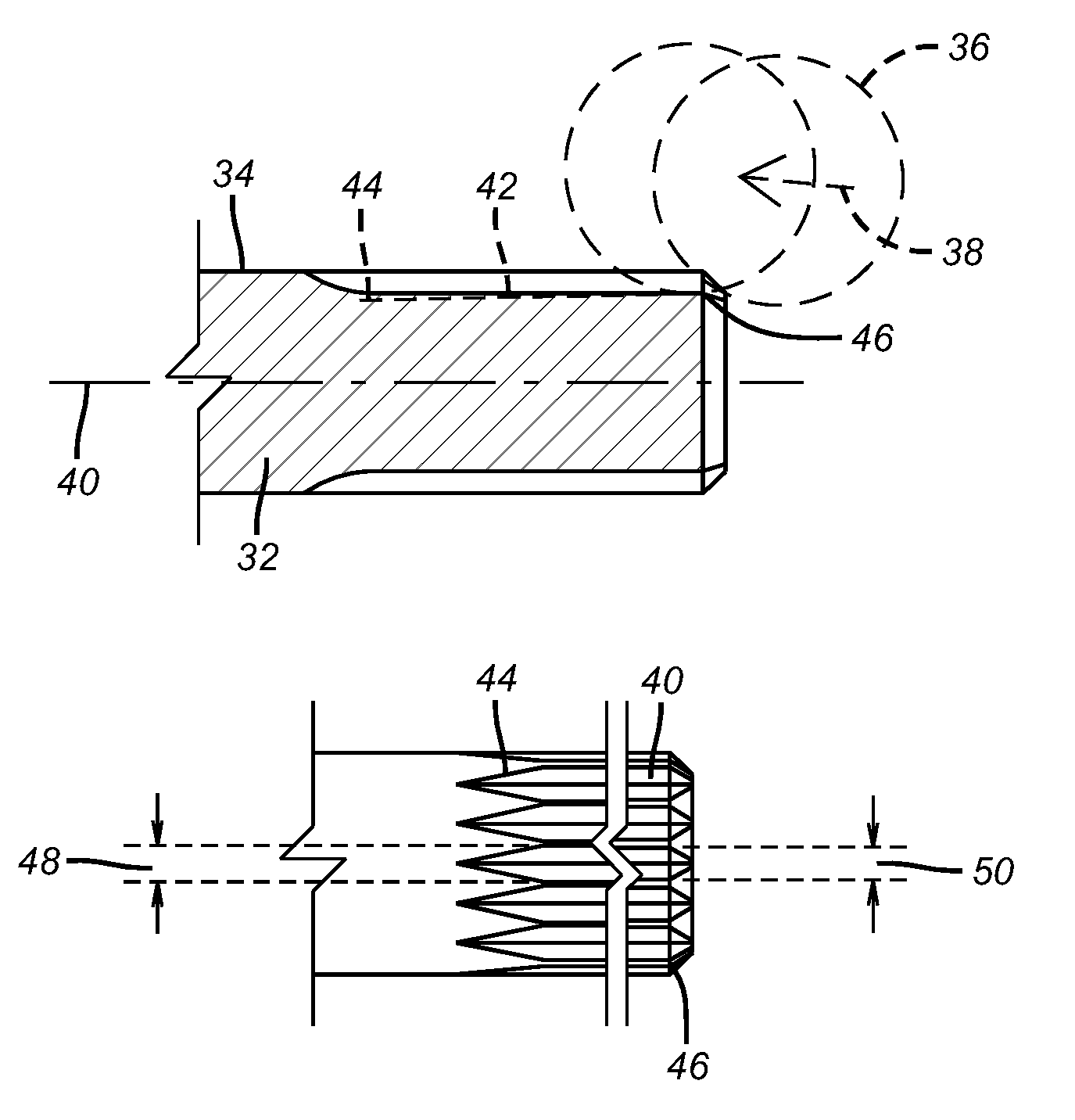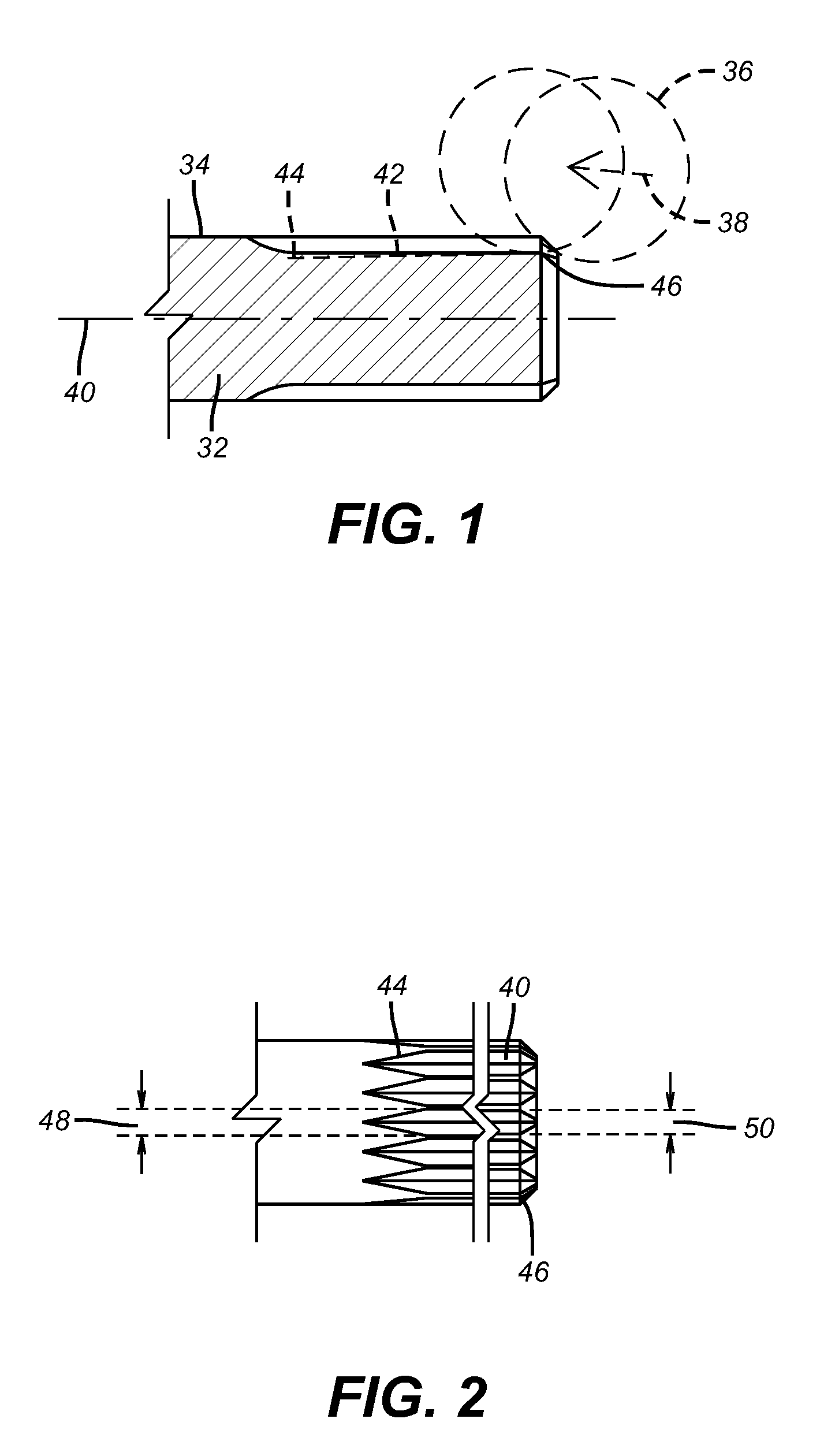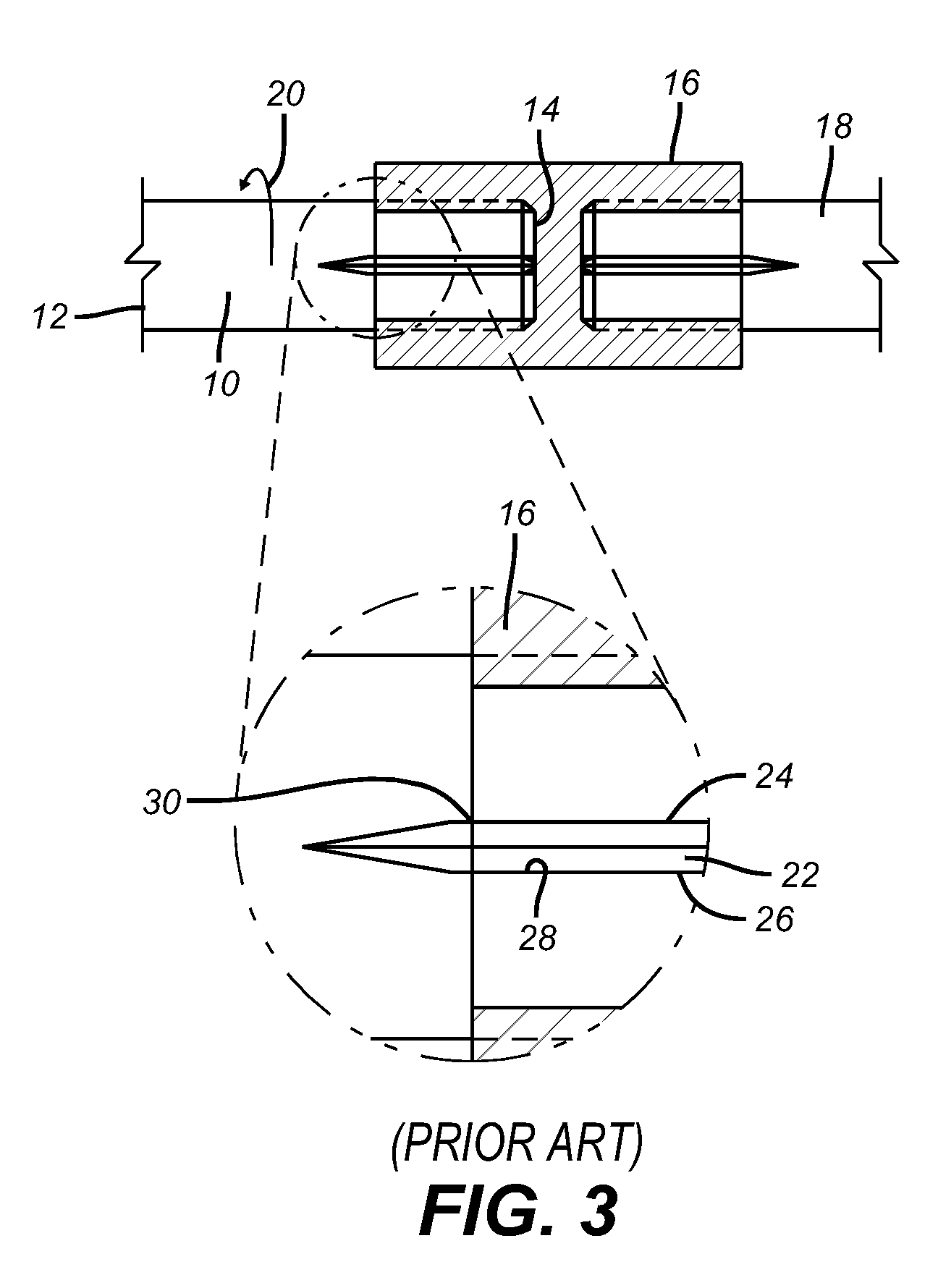Spline Stress Distribution
a stress distribution and spline technology, applied in the direction of couplings, rod connections, manufacturing tools, etc., can solve the problems of affecting the design of shaft connections, affecting the performance of shafts, and affecting the design of shafts. the effect of stress concentration and reducing torqu
- Summary
- Abstract
- Description
- Claims
- Application Information
AI Technical Summary
Benefits of technology
Problems solved by technology
Method used
Image
Examples
Embodiment Construction
[0018]The situation addressed by the present invention is shown in FIG. 3. Shaft 10 has a motor end 12 and a coupling end 14. A coupling 16 connects a driven shaft 18 to the driving shaft 10. Shaft 10 rotates in the direction of arrow 20. As shown in the enlarged view shaft male spline 22 (only one of which is shown for clarity) is preferably an involute shape in section having opposed base edges 24 and 26 that are parallel to each other. The female spline 28 has the same profile as spline 22. As a result, when the motor (not shown) is started and shaft 10 begins to turn, the maximum stress from the applied torque is located at the mouth 30 of the coupling 16 as indicated by the arrow pointing to the leading face of the spline 22 in the direction of rotation 20. This concentration of bending stress at the mouth 30 of the coupling can crack or fracture the splines 22 at the mouth 30 location of the coupling 16. The present invention seeks to reduce the degree of stress at the mouth 3...
PUM
 Login to View More
Login to View More Abstract
Description
Claims
Application Information
 Login to View More
Login to View More - R&D
- Intellectual Property
- Life Sciences
- Materials
- Tech Scout
- Unparalleled Data Quality
- Higher Quality Content
- 60% Fewer Hallucinations
Browse by: Latest US Patents, China's latest patents, Technical Efficacy Thesaurus, Application Domain, Technology Topic, Popular Technical Reports.
© 2025 PatSnap. All rights reserved.Legal|Privacy policy|Modern Slavery Act Transparency Statement|Sitemap|About US| Contact US: help@patsnap.com



